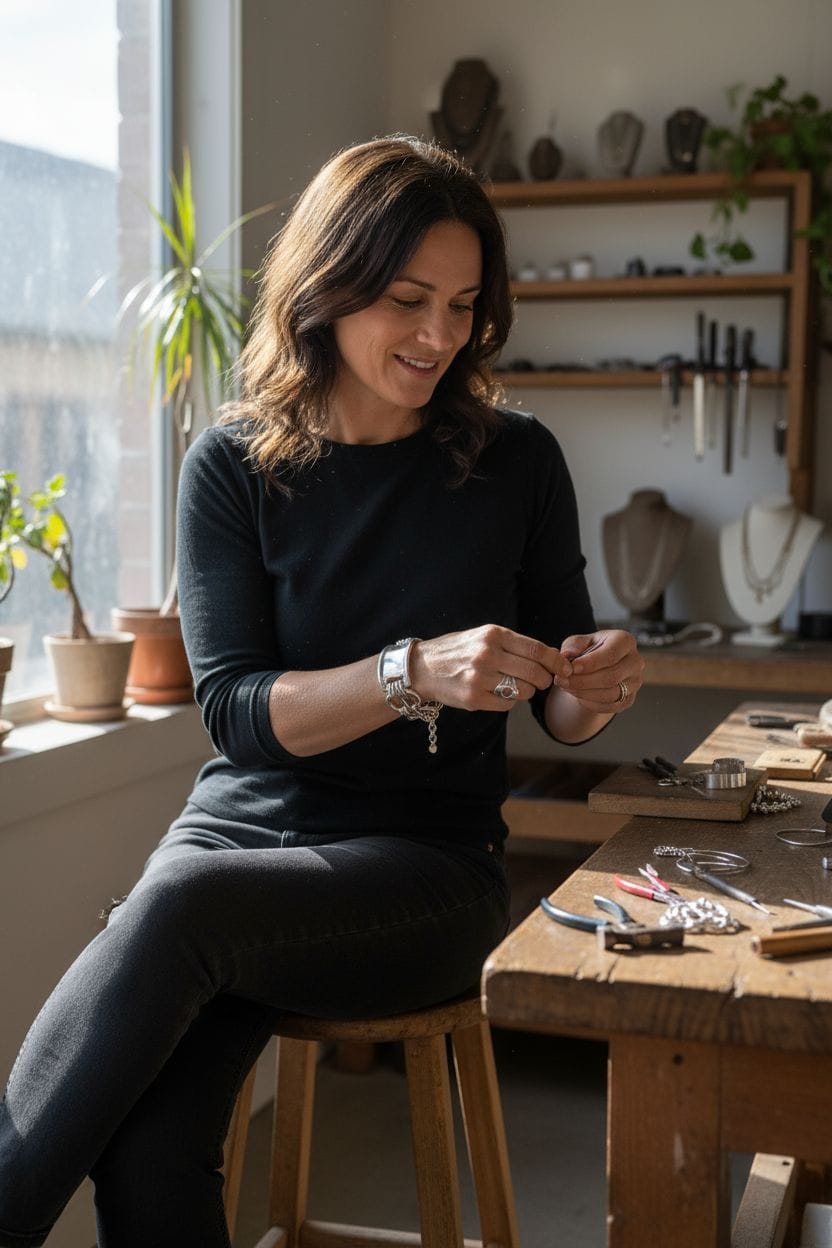Eco-Friendly Jewelry: Sustainable Materials and Modern Design
In today's world, sustainability and ethical practices are becoming increasingly important considerations in every industry, including jewelry. As consumers become more aware of the environmental and social impact of their purchases, there is a growing demand for eco-friendly jewelry that is crafted with sustainable materials and produced using ethical practices. In this article, we'll explore the rise of eco-friendly jewelry, the sustainable materials used in modern design, and the ethical practices employed by jewelry artisans and designers.
The Rise of Eco-Friendly Jewelry
A Shift Towards Sustainability
There has been a notable shift towards sustainability in the jewelry industry, with more designers and brands embracing eco-friendly practices in response to consumer demand. This trend reflects a growing awareness of the environmental and social impact of jewelry production, from mining and extraction to manufacturing and distribution. As a result, many jewelry artisans and designers are adopting sustainable materials and ethical practices to reduce their environmental footprint and promote responsible consumption.
Meeting Consumer Demand
Consumers are increasingly seeking out eco-friendly jewelry options that align with their values and beliefs. They are looking for pieces that are not only beautiful and stylish but also environmentally friendly and ethically produced. This shift in consumer preferences has prompted jewelry designers to reevaluate their sourcing and production methods, leading to a rise in eco-friendly collections and sustainable design practices.
Promoting Transparency and Accountability
Transparency and accountability are key principles of eco-friendly jewelry production. Consumers want to know where their jewelry comes from, how it's made, and who is involved in the process. Jewelry brands that prioritize transparency and accountability are able to build trust with their customers and demonstrate their commitment to sustainability and ethical practices. By providing information about their sourcing, production methods, and labor practices, these brands empower consumers to make informed choices and support responsible businesses.
Sustainable Materials in Modern Design
Recycled Metals
Recycled metals, such as recycled gold and silver, are becoming increasingly popular in eco-friendly jewelry design. These metals are sourced from reclaimed materials, such as old jewelry, electronic waste, and industrial scrap, and processed to create new jewelry pieces. By using recycled metals, jewelry designers can reduce the demand for newly mined materials and minimize the environmental impact of metal extraction and processing.
Ethically Sourced Gemstones
Ethically sourced gemstones are another important component of eco-friendly jewelry design. These gemstones are sourced from mines and suppliers that adhere to strict labor and environmental standards, ensuring that workers are treated fairly and that environmental impact is minimized. Ethically sourced gemstones may include fair trade diamonds, conflict-free sapphires, and responsibly mined colored gemstones.
Sustainable Alternatives
In addition to recycled metals and ethically sourced gemstones, jewelry designers are exploring a wide range of sustainable materials and alternatives in their designs. This includes materials such as sustainably harvested wood, organic textiles, and eco-friendly resins. These materials offer unique textures, colors, and visual effects, allowing designers to create innovative and environmentally friendly jewelry pieces.
Ethical Practices in Jewelry Production
Fair Labor Practices
Ensuring fair labor practices throughout the jewelry supply chain is essential for promoting ethical production. This includes providing safe working conditions, fair wages, and opportunities for training and advancement for workers involved in jewelry production. By supporting brands that prioritize fair labor practices, consumers can help promote social justice and improve the livelihoods of jewelry artisans and workers around the world.
Responsible Sourcing
Responsible sourcing is another important aspect of ethical jewelry production. This involves sourcing materials from suppliers and mines that adhere to strict environmental and social standards, such as the Responsible Jewellery Council (RJC) certification. By tracing the origins of materials and ensuring they come from responsible sources, jewelry brands can minimize their environmental impact and support sustainable practices in the mining industry.
Environmental Stewardship
Environmental stewardship is at the heart of eco-friendly jewelry production. This involves minimizing waste, conserving resources, and reducing the environmental footprint of jewelry production processes. Jewelry brands that prioritize environmental stewardship may use eco-friendly packaging, implement energy-efficient manufacturing techniques, and invest in renewable energy sources to reduce their environmental impact.
Conclusion: Embracing Eco-Friendly Jewelry
As consumers become increasingly conscious of the environmental and social impact of their purchases, eco-friendly jewelry is becoming more than just a trend – it's a movement towards a more sustainable and ethical future. By embracing sustainable materials and ethical practices, jewelry designers and brands can create beautiful, meaningful pieces that not only adorn the body but also promote positive change in the world. As consumers, we have the power to support responsible businesses and make choices that reflect our values and beliefs. Let's embrace eco-friendly jewelry and pave the way for a brighter, more sustainable future for the jewelry industry and the planet.



